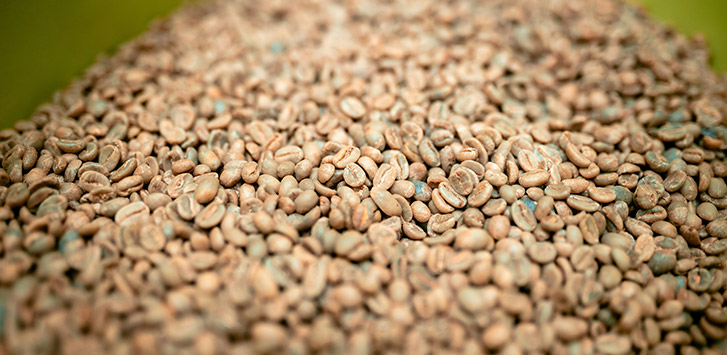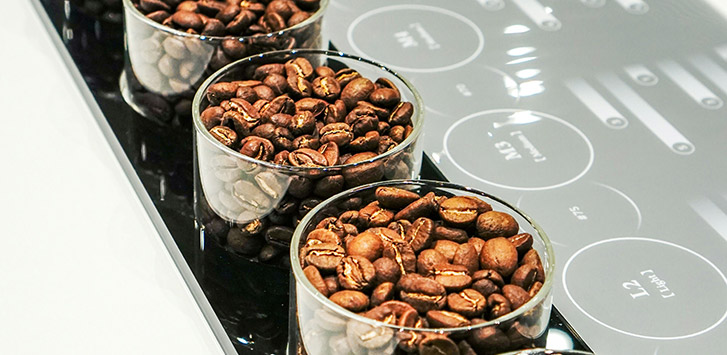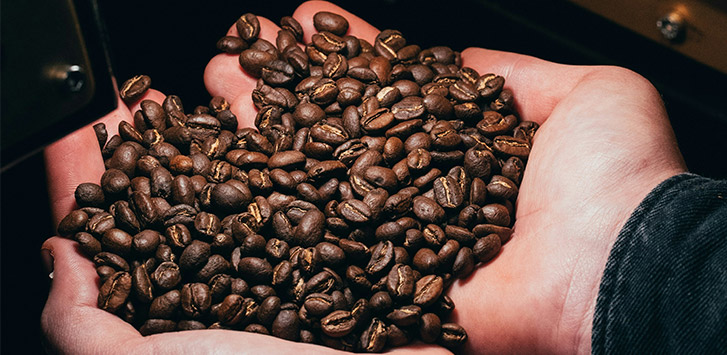It’s easy to feel lost when you first start roasting coffee at home. There’s an overwhelming amount of information out there about how to best roast coffee. While we all have to start somewhere, we want to share our knowledge to help you get started.
Our goal is to teach you about the factors influencing your roast profiles. To start this off, let’s answer a basic, but necessary, question – What is a roast profile?
What Is a Roast Profile?
A roast profile is a set of parameters that define how coffee beans have been roasted or how you want to roast them. But the key to a good roast profile is finding the balance between natural acidity, sweetness, and bitterness.
The two most important roasting parameters are total roast time and coffee bean temperature. Most home coffee roasters will show the real time temperature while you are roasting. This lets you adjust the temperature as the roast progresses, so you remain in control.
Hottop roasters take this one step further and let you hook up the roaster to your computer. On your computer, you can follow the roast progression and monitor the real time temperature. Typically, you'll see a roast curve that shows the progression of the roast.

Common Roasting Terminology
In the coffee industry, we throw around many different terms. For first time roasters, these are some of the more important terms to remember.
Baked Coffee – When the roast either took too long to develop or had a steep drop in temperature, the coffee tastes flat or stale. This is referred to as baked coffee.
Under-Developed Coffee – When coffee beans aren’t roasted long enough, they lack their natural flavors and can taste like a vegetable. This is referred to as under-developed coffee.
Drying Phase – During this phase, the coffee bean’s internal temperature drastically increases. Some believe that they lose moisture here.
Yellowing Phase – During this phase, the coffee beans change color, expand, and shed their outer layer (i.e. the chaff). If you rush through this phase, you can scorch the beans and give them an acrid taste.
First Crack – An audible crack will alert you to this stage. The release of pressure due to evaporating moisture in the bean causes the crack. Different beans reach this stage at different temperatures, so watch your roast carefully. You can end the roast here or continue if you’d like a darker roast.
Developmental Phase – The coffee beans' appearance changes and their flavors rebalance. This is the phase where you can change the heat, air flow, and drum speed (or fan speed) to highlight certain flavors. After this phase, the beans will have less acidity and more bitterness.
Second Crack – You will hear the sound crack out loud, as well. At this point, oils from the bean start to rise to the surface. If you stop here, your coffee will have a well-rounded body with roasted flavors and a slight bitterness. The roasting process has mostly eliminated any diversity in the beans' flavor profiles, but the darker flavors still persist.

A Quick Overview of the Different Coffee Roast Profiles
Before you create your own roast profile, you need to have a basic knowledge of the different roast levels. For now, we’ll take a 10ft. view of the different roast levels so that you know what to look for when you’re roasting coffee. If you’d like to learn more about the different roasts, we go more in-depth in our dark roast guide, medium roast guide, and light roast guide.
Light Roast Coffee
Light roast coffee comes in a couple different forms – A cinnamon roast and a New England roast. The lightest roast is considered a cinnamon roast. The roaster pulls the beans immediately after the first crack. A light brown color, these beans have a prominent acidity.
A New England roast is very similar but has a slightly darker tone to it with more complex acidity.
Medium Roast Coffee
Medium roast coffee is known as an American roast and a City roast. An American roast occurs after the first crack and is slightly sweeter than a light roast. Its full body pairs well with the naturally acidic notes. On the other hand, a City roast is a medium brown with a well-balanced body and noticeable acidity.
Dark Roast Coffee
Dark roast coffee has the most variations. A Full City roast is the lightest version at a medium dark brown with a slight oil sheen. To achieve a Full City, you need to start the cooldown cycle at the beginning of the second crack.
A Vienna roast is a moderate dark brown with light oil and a bittersweet taste. The caramel flavor pairs well with the muted acidity.
A French roast is dark brown and shiny from all the oil. The diminished acidity and bittersweet caramel are reminiscent of a Vienna roast. An Italian roast is nearly black in color and very shiny with an overall burnt taste.
Factors That Influence Flavors and Roast Levels
Numerous factors influence how your coffee roasts. You'll want to take each into account as you create a roast profile for your coffee beans.
Density
The higher the density, the faster the coffee beans absorb heat. For more dense beans, you should use a higher heat to prevent the roast from degrading. A higher density coffee bean also does well with a light roast.
For lower density coffee beans, if the heat is too high then you’ll end up scorching the outside of the beans.
Moisture Content
Water has a good ability to absorb heat, so the bean's moisture level directly affects the amount of heat absorbed. This can impede the Maillard reaction (or caramelization).
Size of the Coffee Bean
The longer the distance to the center of the coffee bean, the longer it takes to roast. Thus, larger coffee beans need to be roasted longer for a at a lower temperature to absorb the heat properly. Meanwhile, smaller coffee beans roast quickly and thoroughly.
Shape of the Coffee Bean
The shape of the coffee bean impacts more than you would think. Round coffee beans are easy to roast because of their even shape. Elongated or pointed coffee beans require a more delicate touch to ensure you don’t burn the tips of the beans.
Origins
Each green coffee origin produces different levels of moisture, density, and hardness. Each origin also grows different size green beans in different shapes. All of these factors influence how you will roast the coffee beans, resulting in different roast profiles.
Hardness
Coffee beans that are less hard can be easily over-roasted. That means you’ll want to start with a lower initial temperature and slowly increase it as the roast progresses.
Processing Methods
How the coffee beans are processed can determine how you should roast them. Natural processing, or dry processing, leaves residual sugar in the coffee beans. If this sugar takes on too much heat, it can easily burn. Similarly, carbonic maceration also leaves sugar in the beans that can burn if heated too quickly.
Meanwhile, washed coffee beans tend to roast well fast and light. Wet-hulled coffee beans roast best slow and dark.

General Notes
Not all beans react the same to roast settings. Some beans reach the first crack faster, some at a lower temperature. Some handle a dark roast better, while some lose all flavors that make them unique when roasted too dark.
That’s why it’s important to know all the details about your coffee beans.
The soil composition they grew in.
The altitude they grew at.
The type of processing they underwent.
The drying process used.
Each of these will guide you to create a different roast profile for your coffee beans that brings out the best flavors. It's worth it to learn how to roast well because then you'll truly enjoy the fruits of your labor.